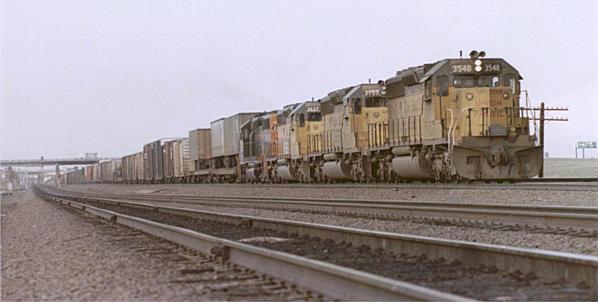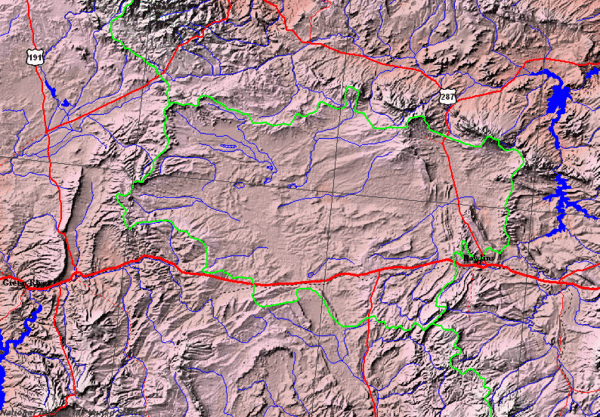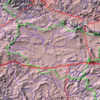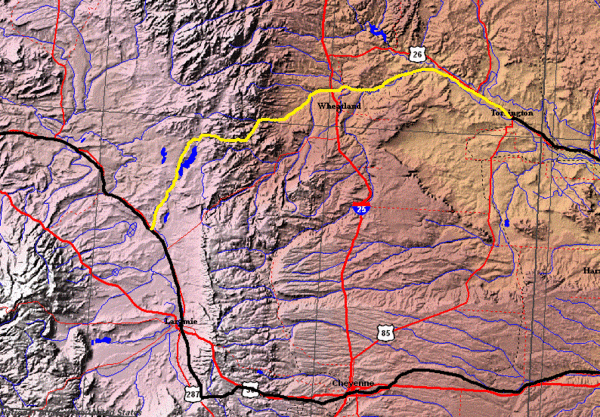Originally Posted by Ace:
Hoping someone with a better knowledge of Wyoming geography can tell us if a railroad could have built along the Laramie River, between Fort Laramie and Medicine Bow, to avoid 1000 feet of additional climb (? see previous posts) over the Laramie Mountains?
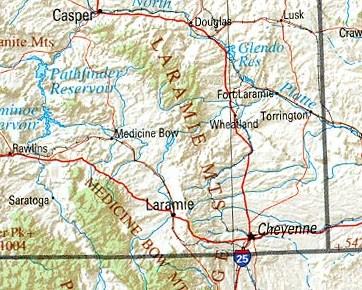
I live near the black Hills in South Dakota, so I know a little bit about east/central Wyoming. Past medicine bow, I believe there is a pair of reservoirs, both held up by a dam. So that tells me that the terrain is too steep.
The terrain of Wyoming is flat for the East third of the state, and then three major ranges of hills/mountains take up the rest of the state, Kind of like Colorado, but a little more flat.
The only way around that I know of would be to cross around the East side of the Laramies entering Wyoming near lusk, maybe a little north, and head west to Casper, which by the way is what the line BNSF now own does. A quick Google search of the area and set to Google earth reveals that there are not very many paths. Also, look where the roads are built. They for the most part follow the rail line and will almost never climb a grade on a major highway steeper than 10%. If there is no road built, there is little possibility for a train to make it up.
Finally, as stated earlier, water is scarce here, so steam trains would have a tough time crossing the great distances.
You can think of it like crossing a vast desert. The original route is one of the better ones to take.




